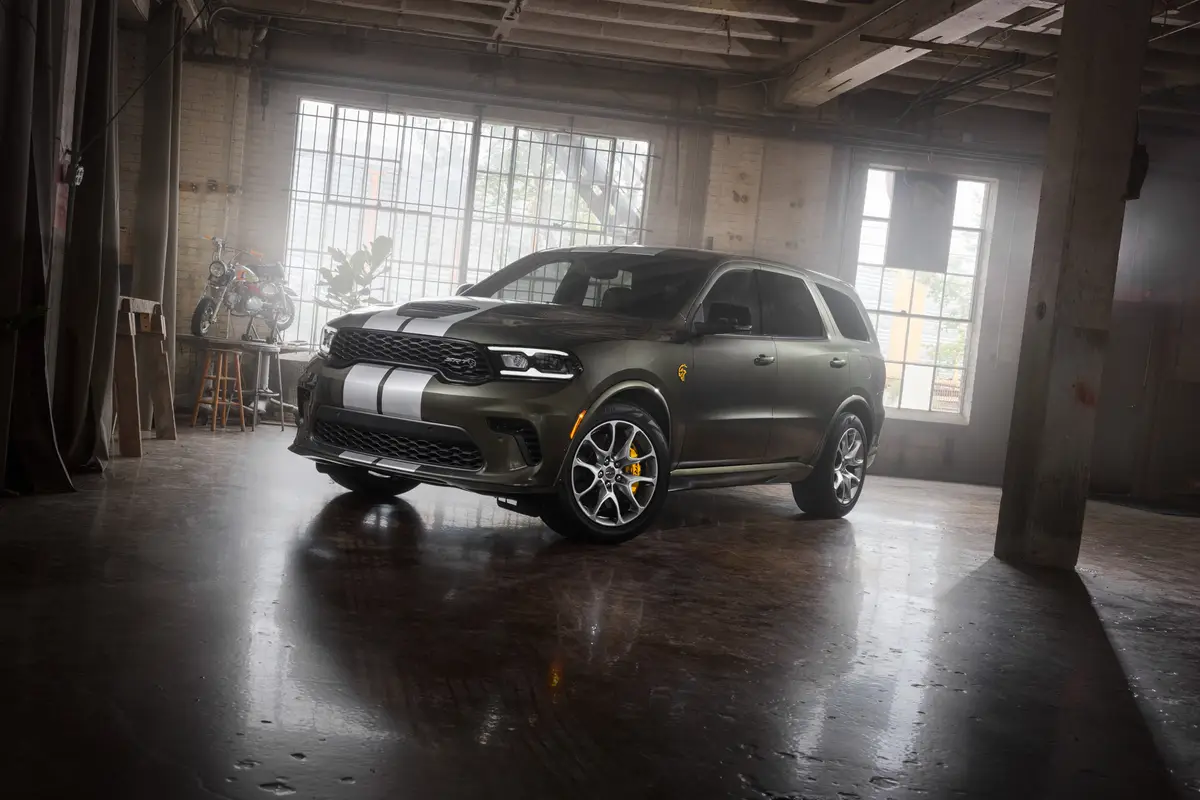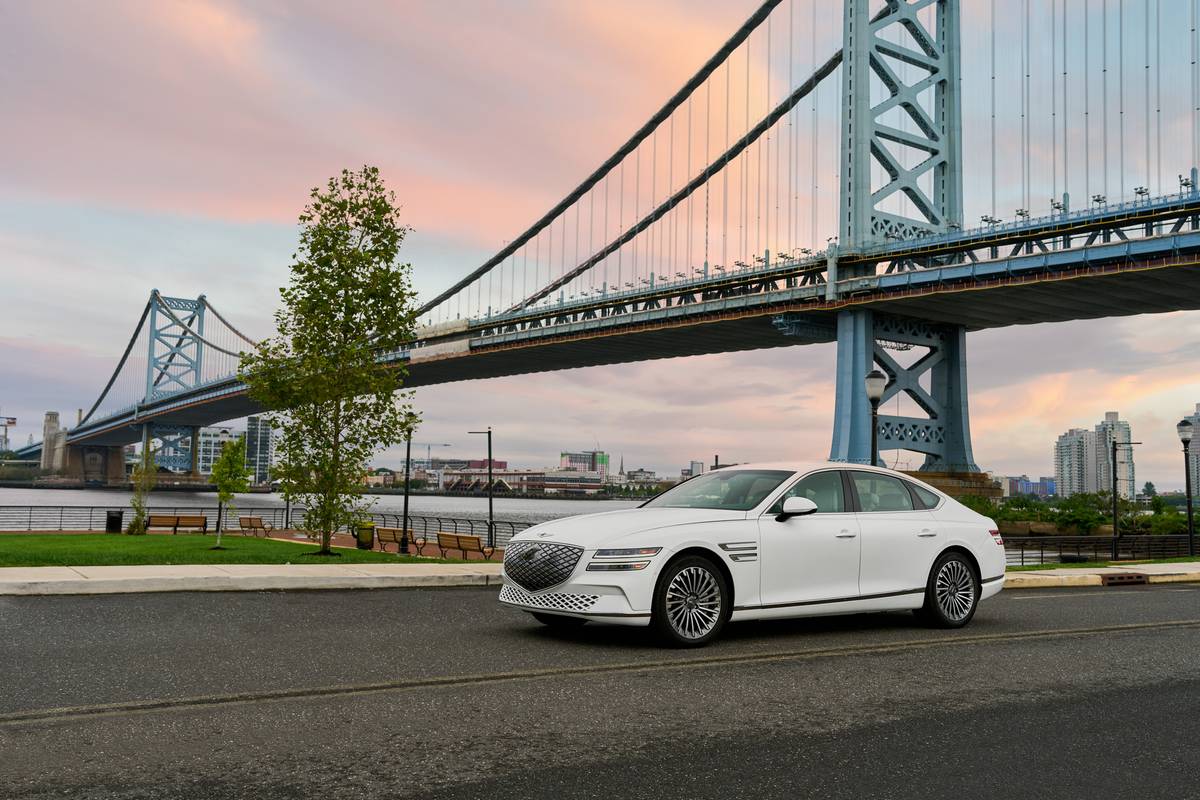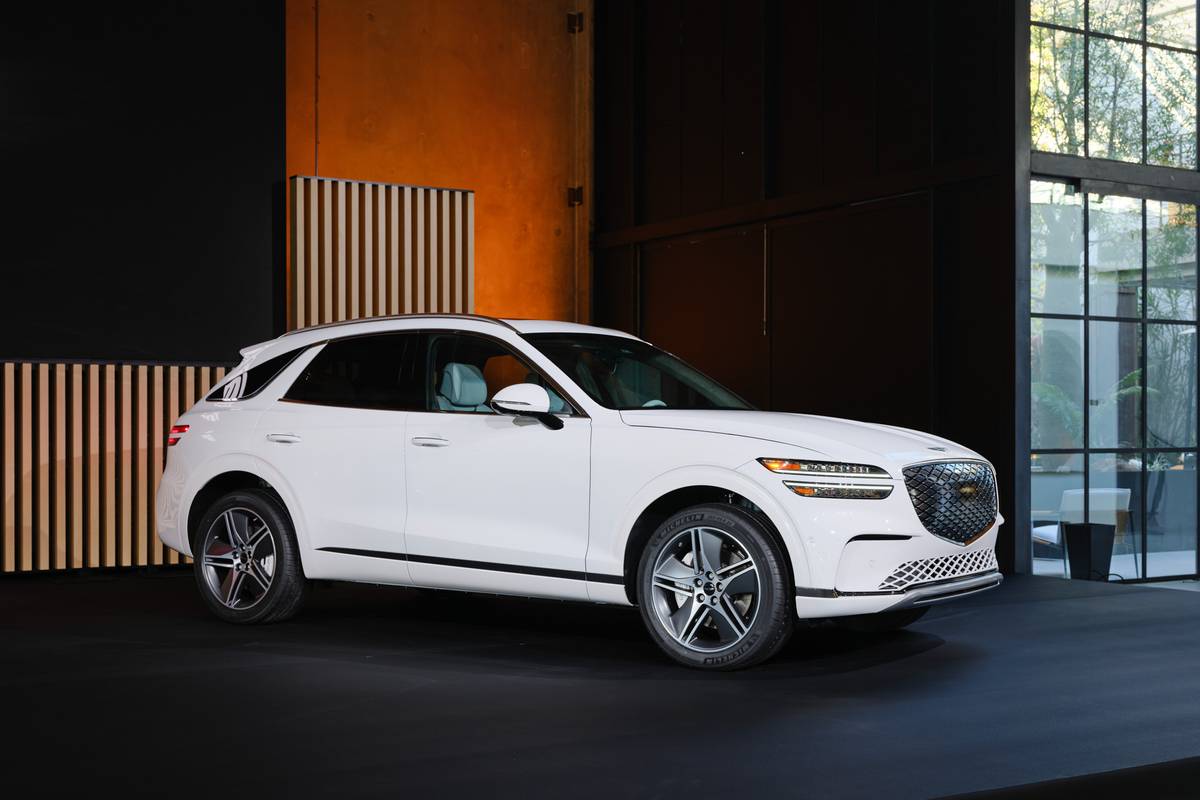Our view: 2010 Nissan 370Z

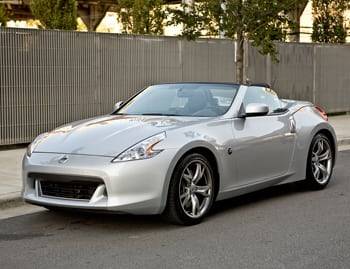
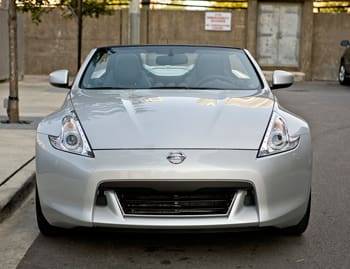
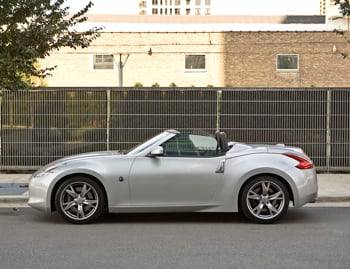
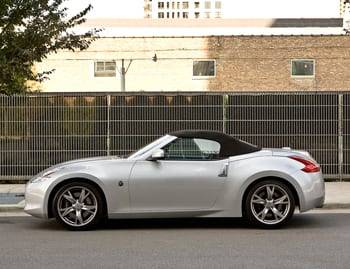

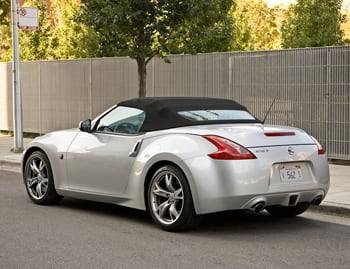
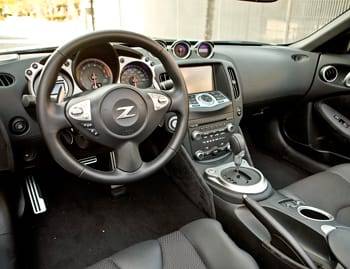
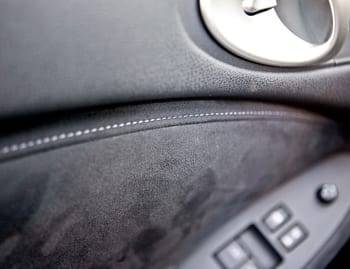
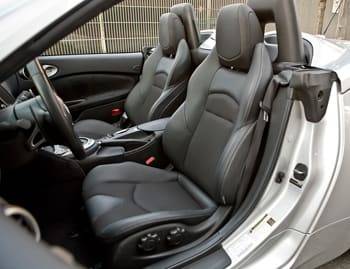
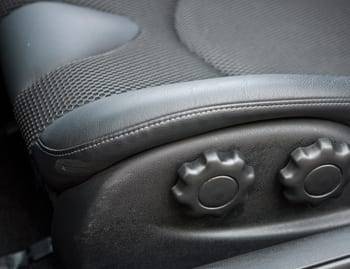
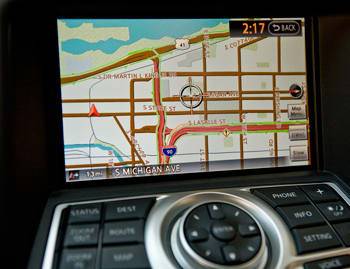

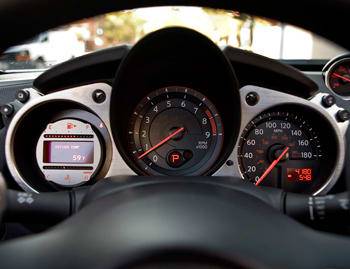
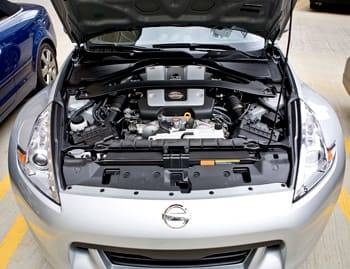
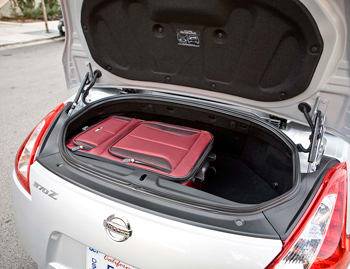
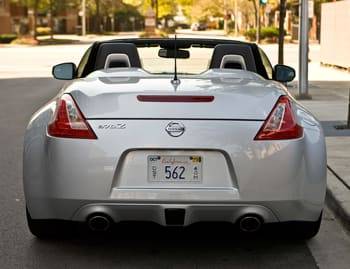
















When a sports car loses its top, it usually suffers a loss in performance prowess as well. Conventional wisdom has it that convertibles are less structurally sound, weigh more and just don’t have the chops of their hardtop counterparts.
The 2010 370Z blasts those demons back to the dark ages.
Despite the fact that its debut is happening a year later, the Z convertible was conceived alongside the coupe; you can compare the two here, or check out a review of the 370Z coupe. Because the Z was engineered as both a coupe and a convertible, the roadster has an improved structure that feels remarkably solid. Add in plenty of power, an upscale interior and good looks galore, and this convertible may be even more fun than its coupe counterpart.
Performance
The true difference between a sports car and a muscle car has nothing to do with power — it’s all about handling. The 2010 Z roadster has a terrific weight balance, and it weighs just 200 pounds more than the coupe, thanks to its cloth top. Many new convertibles feature retractable hardtops to get the most comfort for all-season driving, but Nissan is smartly aiming at the enthusiast driver.
During my week of testing, I kept thinking to myself that the roadster hasn’t really lost anything to the coupe, which I drove earlier this year. The roadster came equipped with an optional Sport Package with huge 19-inch wheels that gripped the road like Velcro. There was no disconnect between the steering feel and how the car performed. It’s as close to a perfectly handling vehicle as you can get, and at its price I can’t think of anything better.
There’s more than enough power available, at 332 horsepower. While recent muscle cars have reached easily into the 400-hp range, a car like this doesn’t need that kind of overkill to be extremely fast. In fact, I think some recent high-performance models have more power than their chassis can handle. Not so with the Z. It seems to be perfect in terms of its weight-to-power ratio. And yes, I’m aware I’ve said perfect twice now.
There are two transmission choices for the 370Z: a six-speed manual and a seven-speed automatic with manual shift paddles, with which my test car was equipped. I’ve tested the manual in the 370Z coupe, and its SynchroRev Match feature — which basically masters the art of downshift rev-matching for you — is a marvelous setup that sports-car drivers will appreciate. However, that doesn’t mean you should totally discount the automatic.
The shift paddles glide up through the gears smoothly, and when you kick down one gear the feel is quite faithful to a manual’s. But try to shift down two gears, say, from Fifth to Third, and there’s more bucking than you might expect before power returns. If the Z were less of a raw sports car, I’d advise people to go with the automatic, but because this is a rare blend of performance and open-air ability, the manual still gets my vote.
Braking is also spot-on. The standard setup is 12.6-inch ventilated rotors in the front and rear. The Sport Package replaces those with 14-inch rotors up front and 13.8-inch rotors in back. Stopping was smooth and linear with the larger brakes, and they didn’t feel overly grabby, like those in sport-tuned trim levels from other manufacturers.
The real drawback of driving such a highly tuned sports car comes in ride comfort, of which the Z doesn’t have much. The optional Sport Package and its large wheels on my test car probably didn’t help matters, but passengers will feel the pavement’s every nook and cranny. The seats are extremely concave to keep you in place, but they’re also stiff, amplifying road imperfections through the spine. If you drive on smooth roads year-round, the suspension won’t be as punishing. I live in Chicago, however, which is home to truly horrible roads. That sucked some of the fun out of testing this car.
Exterior
There’s probably no better anecdote about how good-looking the new Z roadster is than the initial reaction displayed by the kids playing in front of the house next door when I pulled into my driveway: “That’s a coooool car!” they shouted, before going back to skateboarding and tossing footballs. Indeed, it’s the type of car that adorns boys’ bedroom walls.
The snarling front end is easy to point to as the reason the car looks “cool,” but the bulging fenders give the 370Z a sexy curve that’s relatively absent on most modern cars, even ones designed to look sporty.
In the end, that’s what I like about the Z: It’s as unabashedly a sports car in terms of form as it is in terms of function. One aesthetic drawback, however, is the awkward shape of the canvas top when it’s in place. While it doesn’t look bad from most angles, it’s much too blocky from the rear, ruining all the curves found elsewhere on the car.
Interior
Nissan has a knack for making inexpensive cars — like its Versa hatchback and Sentra compact — feel like they belong in a more expensive class. Lately, the brand has delivered relatively expensive cars, like the Murano SUV, with interiors that are almost Infiniti-like in terms of luxury appointments.
The Z feels the same.
Even the base model has attractive leather wrappings and high-quality plastics. When you move up to the Touring model, there’s even more leather — on the seats, for example — and suede inserts on the doors.
My only beef with the interior is seat comfort. In the Touring model, the leather seats have netting in the center that seems cheap to the touch and, through light clothing, can feel irritating. I also found the side bolsters to be thoroughly under-padded. There is little bolster padding between the plastic base of the seat and your thighs. It’s so bad that my left leg went a bit numb on my normal commute. My right leg — which had to do more work — was OK. But overall, being 5-foot-10 and maybe 10 or so pounds overweight, the seats offered little support for me. I can’t imagine anyone larger than me being any more comfortable.
Features & Cargo
The Z roadster comes in only two trims, keeping options relatively simple. The base model starts at $36,970 and comes with xenon headlights, push-button ignition and 18-inch wheels. The Touring model is priced at $40,520 and adds heated and cooled leather seats, Bose audio, Bluetooth and aluminum pedals. A Sport Package can be added to the Touring trim only, bringing the total price to $43,320. It adds sport brakes, Synchro-Rev Match for manual-transmission-equipped models, a limited-slip differential, 19-inch wheels and high-performance tires.
One nice surprise about this sporty convertible is that it has a genuine trunk with decent room. While 4.2 cubic feet may sound quite small, you can easily fit two overnight suitcases in it, with room for some shopping, too. The trunk in the convertible seems even more useful than the storage space in the coupe, which is listed at 6.9 cubic feet. A Mazda MX-5 Miata has 5.3 cubic feet of trunk space.
370Z in the Market
There aren’t a lot of competitors for the 370Z roadster. Even the popular and similarly priced V-8 Mustang convertible is more about cruising and stoplight acceleration than it is handling. The real competition might come from the Z coupe, with potential buyers wondering if they’re willing to sacrifice performance for open-air excitement. With this roadster, I’d tell them not to worry about making the plunge.
| Send David an email |

Former managing editor David Thomas has a thing for wagons and owns a 2010 Subaru Outback and a 2005 Volkswagen Passat wagon.
Latest news
